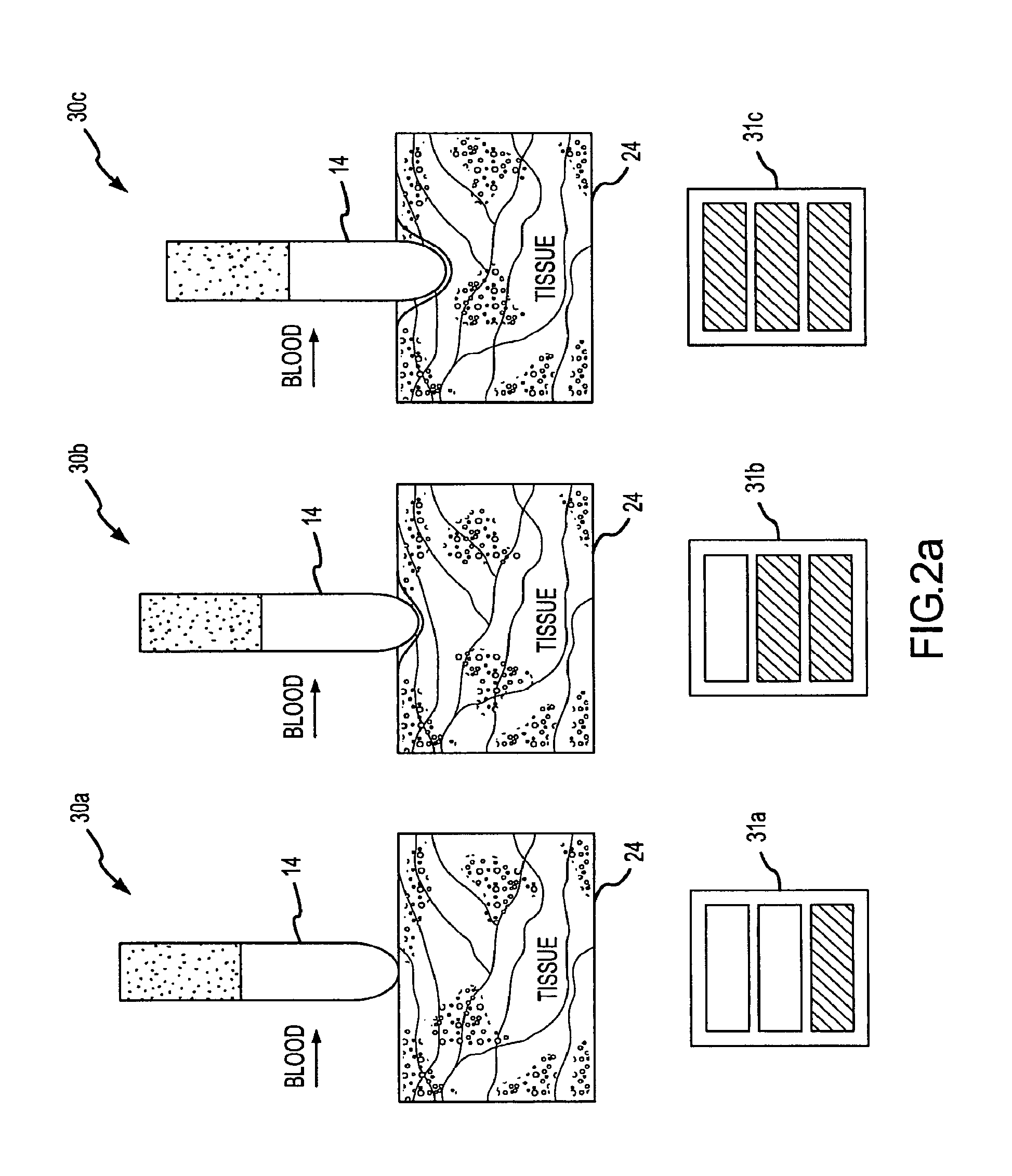Assessment of electrode coupling for tissue ablation
a tissue ablation and electrode technology, applied in the field of electrode catheters, can solve the problems of difficult to determine the contact between electrodes and tissue, the difficulty of ensuring adequate tissue contact between electrodes, and the inability to achieve tissue ablation. , to achieve the effect of increasing the potential and reducing the potential of puncturing the tissue wall or membran
- Summary
- Abstract
- Description
- Claims
- Application Information
AI Technical Summary
Benefits of technology
Problems solved by technology
Method used
Image
Examples
Embodiment Construction
[0071]Exemplary embodiments of a tissue ablation system and methods of use to assess electrode-tissue contact and electrical coupling are depicted in the figures. As described further below, the tissue ablation system of the present invention provides a number of advantages, including, for example, the ability to apply a reasonable amount of ablative energy to a target tissue while mitigating electrode-tissue contact and coupling problems. The invention also facilitates enhanced tissue contact and electrical coupling in difficult environments (e.g., during lesion formation on a surface inside a beating heart).
[0072]FIG. 1 is a diagrammatic illustration of an exemplary electrode catheter system 10 which may be implemented to assess electrode-tissue contact during a tissue ablation procedure for a patient 12. Catheter system 10 may include an electrode catheter 14, which may be inserted into the patient 12, e.g., for forming ablative lesions inside the patient's heart 16. During an ex...
PUM
 Login to View More
Login to View More Abstract
Description
Claims
Application Information
 Login to View More
Login to View More - R&D
- Intellectual Property
- Life Sciences
- Materials
- Tech Scout
- Unparalleled Data Quality
- Higher Quality Content
- 60% Fewer Hallucinations
Browse by: Latest US Patents, China's latest patents, Technical Efficacy Thesaurus, Application Domain, Technology Topic, Popular Technical Reports.
© 2025 PatSnap. All rights reserved.Legal|Privacy policy|Modern Slavery Act Transparency Statement|Sitemap|About US| Contact US: help@patsnap.com



